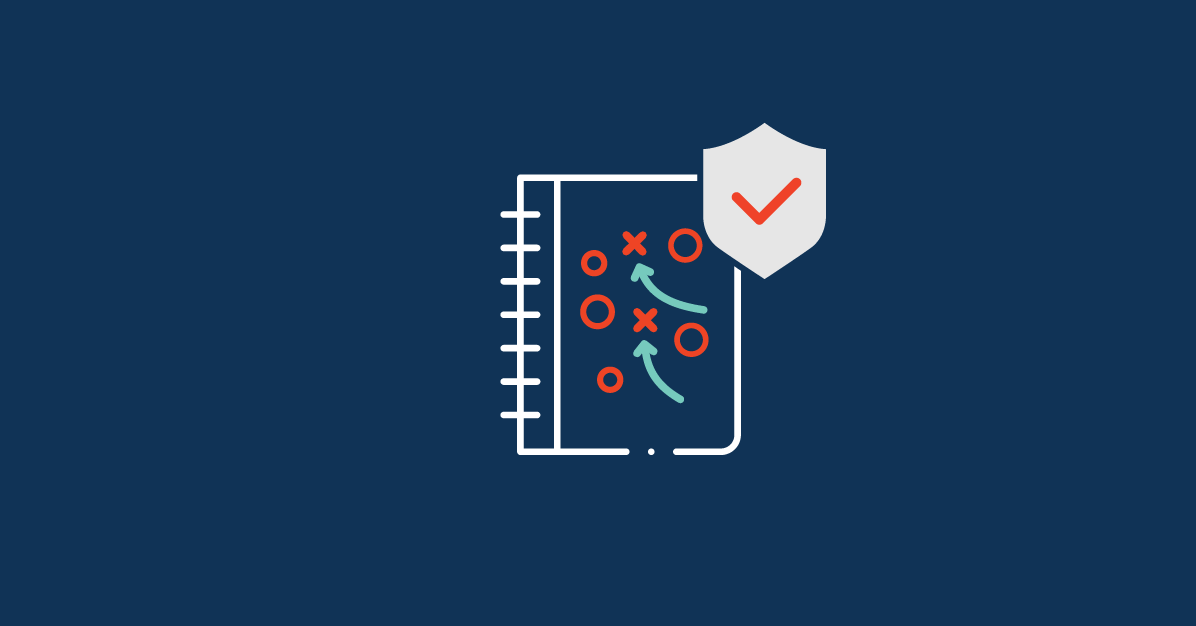
Automate Your Testing and Recovery: Work Smarter, Not Harder
Ninety-five percent of MSPs say automating their processes is necessary to focus on innovation and strategic goals. Despite that majority, only 14% of MSPs attempt to automate and streamline operations. This article highlights the benefits of automation in a consolidated and efficient stack. With this information, MSPs can reevaluate the actual costs of their current infrastructure and assess the impact of automation. Here’s what we’re covering:
Today’s MSPs can harness innovative technologies and the modern cloud for a visionary approach to business continuity and disaster recovery (BCDR). Leveraging the protection of the cloud along with automated backup and disaster recovery (BDR) capabilities, MSPs can lower recurring costs by cutting operational overhead, meet compliance and cyber insurance requirements quickly, and reinforce data protection with less chance of error.
Table of Contents
Cyber Insurance and Compliance: A Match Made in MSP Heaven
Cyber insurability and compliance go hand in hand. Whether it’s obtaining Cybersecurity Maturity Model Certification (CMMC), strategizing Governance, Risk, and Compliance (GRC), or meeting the requirements for cyber insurance – standards are rising. For MSPs – who are considered “high-risk” due to targeted cyberattacks on small to medium-sized businesses (SMBs), including MSPs – qualifying can be a long, arduous, repetitive, and expensive task.
Despite the effort and cost, compliance is mandatory, and cyber insurance should be. Both are critical to surviving a data breach or cyberattack without significant financial losses. A recent Cyber Claims Study reports that the average SMB incident cost is $157,000, and 81% of cyber claims involve recovery expense losses. Without the support of cyber insurance, can your MSP afford the following costs?
- Cyber extortion, including ransomware and social engineering.
- Regulatory fines or penalties.
- Media liability and reputational losses.
- Business interruptions and downtime.
- Breach response and management.
(Regardless of the answer, why risk it?)
Are You Cyber Insurable?
While requirements and policies vary, the cost and frequency of cyberattacks drive the demands of compliance agencies and cyber insurance carriers. The latest changes focus on demonstrating a security-first approach to data protection. The keyword is “demonstrate.” And to do that, your MSP needs to be “cyber-insurable.”
Cyber-insurability comes down to proving that your MSP puts automation ahead of relying on human intervention. More specifically, that means you…
- Store data in the public cloud.
- Rely on an efficient and consolidated stack.
- Test backups daily with proof.
- Complete frequent disaster recovery tests with proof.
- Use automation in BCDR management and for generating test evidence.
The name of the game is to reduce the risk that inherently comes with the nature of being an MSP. To do that, you need to decrease the likelihood that a breach could occur. Human error is the number one cause of data loss, so the less human you have, the better. Luckily, modern BCDR solutions and the public cloud have innovations to help you qualify and generate reports for ongoing security checks. Using automation to curb monthly expenses and increase output, MSPs can also lower operational costs and total cost of ownership (TCO).
Benefiting from Cyber-Insurability
The process of becoming cyber-insurable demands that you modernize, evolve and elevate your MSP with automation. While it may seem arduous, the ROI on maturing from BDR to BCDR is widespread. Furthermore, with direct-to-cloud deployment, rip and replace is a thing of the past, making it easy to upgrade your stack.
Replace the manual time, effort, and attention technicians waste on error-prone interventions with automated BCDR capabilities. Automation enables flexibility, allowing MSPs to simplify their stacks using all-in-one BCDR solutions. Instead of managing a different vendor for every infrastructure, MSPs can do it in a single solution for a simple, cyber-insurable stack.
Additionally, automation streamlines your workforce. MSPs can hire fewer technicians at a lower skill level who can master a single solution for better and faster service. Meanwhile, higher-skilled technicians can focus on delivering value rather than getting caught up in manual tasks. Recruiting, onboarding, and training can be condensed to get team members to work faster. Support, billing, and other administrative tasks are also simplified in a unified and automated platform. At the same time that you’re overcoming common MSP labor challenges, you’re also improving your BCDR services, meeting competitive SLAs, and ensuring rapid and reliable disaster recovery – while protecting your business from catastrophic loss.
Time-Saving Automation for Compliance and Cyber Insurability
As a 100% MSP-dedicated solutions provider, Axcient’s BCDR solutions support the compliance and cyber insurance requirements MSPs are up against. We use a cloud-first approach to data protection with BYOC (Bring Your Own Cloud). MSPs can store and protect data in the public cloud, including servers in Microsoft Azure, AWS, Google, or your private cloud. Axcient x360Recover gives MSPs deployment flexibility to solve multiple use cases with just one vendor and solution – including endpoint backup, hardware-free BDR, full-service BDR, and public or private cloud backup.
With Axcient’s proprietary Chain-Free backup technology and patented automation with high-visibility insights and reporting, MSPs can become cyber-insurable, soar through applications, maintain coverage, and get claims paid. Here’s how:
Automatic Backup Integrity Testing
What is it? AutoVerify is a built-in, always-on, automatic backup monitoring and verification feature included in x360Recover for both cloud-based and appliance-based deployment options. It’s continually monitoring backups and automatically virtualizes the latest backup recovery point for each protected system. Nightly, AutoVerify tests endpoints using intelligent adaptive backup VM testing to perform numerous deep volume assessments for bootability, OS health, corruption, file system integrity, and application usability.
How does it support compliance and cyber-insurability?
- Automatic backup monitoring, testing, and verification with alerting and escalation rules allow MSPs to test backups without any labor requirements or chance of suffering “backup burn” during recovery.
- Self-healing technology automatically responds to backup failures by re-backing up the portion of compromised or corrupt data in the next backup and alerting the proper technicians for remediation.
- Test results are automatically prepared and provided in the x360 Portal for easy access and sharing with internal and external stakeholders and clients.
- Done-for-you, weekly Client Executive Summary Reports demonstrate automatic backup testing and backup health with a Boot VM screenshot.
“The health status of our backups since moving to Axcient is 99% better. AutoVerify is very helpful. Being alerted when a backup is failing is fantastic. It works seamlessly, and we love it. …I’m making six figures more than I was last year on backup savings alone.”
– TODD MADDEX, PRESIDENT OF TAMPA BAY TECH SOLUTIONS
Automatic Disaster Recovery Plan Testing
What is it? Virtual Office is a built-in, always-on, self-managed cloud failover recovery feature included in x360Recover for both cloud-based and appliance-based deployment options. MSPs can immediately start virtual machines in the Axcient Cloud of one or more protected devices to replace all impacted systems temporarily. Once the VMs are spun up, you can create a Virtual Office running within the Axcient data center using matching existing server configurations.
How does it support compliance and cyber-insurability?
- Data encryption in transit and at rest in Axcient’s off-site SSAE 16 Type II and SOC-certified data centers maintains compliance during failover.
- Self-remediation uses a secure, web-based application with role-based authentication and multi-factor authentication (MFA) – now required for most cyber insurance plans.
- One-click disaster recovery with pre-configured automatic Runbooks for virtualized devices in Virtual Office significantly accelerates business continuity without human intervention.
- Full-office disaster recovery testing optimizes disaster recovery planning and proves cybersecurity readiness through results to insurance carriers, compliance agencies, and clients.
- Run clients in the Virtual Office for 30 days a year at NO cost to account for long equipment lag times or bridge the gap while power is restored.
- Automated Virtual Office Teardown shuts down test instances based on custom settings to contain usage overages and maximize free Virtual Office days each year.
“I cannot commend Axcient support enough. We’d never spun anybody up in a cloud instance before, so it was trial by fire. They held our hands and walked us through the whole process. On top of that, they didn’t charge for extra time in the cloud for our clients who couldn’t physically access their offices. It was appreciated and reassured our clients.”
– RODDY BERGERON, CISO AT ENTERPRISE DATA CONCEPTS
Co-Managed Backup Through Integration
What is it? The x360Recover and ConnectWise Asio™ integration tie these products – a BCDR solution and an IT management platform – together for unified insights in fewer clicks. Axcient partners can view the details of x360Recover-protected systems and health status information in the Asio dashboard. ConnectWise RMM customers can access their Axcient BDR tools from the RMM dashboard for a central overview of alerts and system health. MSPs must use Axcient x360Recover, ConnectWise Asio, and ConnectWise RMM to use the co-managed backup, optional Network Operations Center (NOC) services, and partner program points.
How does it support compliance and cyber-insurability?
- Centralized and straightforward oversight in a single sign-on gateway to all ConnectWise tools for monitoring alerts, verifying backups, viewing automated backup validation results, managing recoveries, and responding to tickets.
- Professional services and the ConnectWise NOC take on the planning, deployment, management, testing, support, and problem resolution typically required for BDR management.
- Co-managed backup saves up to 90% of BCDR management time due to usability, consolidated insights, less navigating between dashboards, and more vendor support.
- Co-managed backup eliminates up to 80% of the labor costs associated with backups, reducing human intervention and improving business continuity services.
Coming Soon: More MSP Enablement Tools from Axcient!
As the cybersecurity landscape evolves, so do the features and tools MSPs need to keep up. Axcient is constantly working on improvements MSPs can use across their business. Here are some exciting new things coming down the pipeline:
- Global Backup and Retention Policies: Easily and quickly onboard protected systems by minimizing potential mistakes with retention policy configuration and fewer policy-based failures.
- AutoVerify and Virtual Office for Linux: We are reinforcing Linux support with AutoVerify for automatic backup verification and Virtual Cloud for cloud failover capabilities.
- Azure Cloud Failback: Auto-failback and restore into Azure environments with x360Recover Direct-to-Cloud (D2C) for Microsoft Azure using a wizardized method for recovery and export instead of manual failback.
- Backup Schedule and Retention Policy Reports: Easily audit client backup schedules and retention policies to avoid errors while adhering to specific requirements for compliance.
- Client Health Digest 2.0: The current Client Health Digest, a daily emailed report for MSP clients, is getting an upgrade based on partner feedback.
Ready to Start Automating?
Now that you know how Axcient supports automatic testing and recovery for intelligent compliance and cyber-insurability, it’s time to put it to use.
Join us for Axcient’s x360Recover Product Enablement Webinar – exclusively for Axcient partners – on Wednesday, September 13th. Product experts will walk you through Virtual Office, including disaster recovery testing and planning, self-management capabilities, runbooks, and using your free 30 days of Virtual Office every year.
- Create tried and true disaster recovery plans.
- Configure runbooks tailored to individual clients for one-click disaster recovery.
- Test disaster recovery plans regularly and with proof.
- Demonstrate disaster recovery automation for cyber-insurability.
Author
Related posts
How well could you sleep with reliable cloud-based backups and recovery?
Take a deep dive into Axcient’s proprietary, automated security features to see how we’re ensuring uninterrupted business continuity — no matter what:



